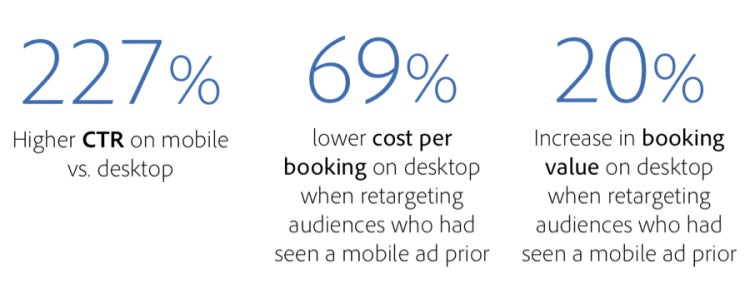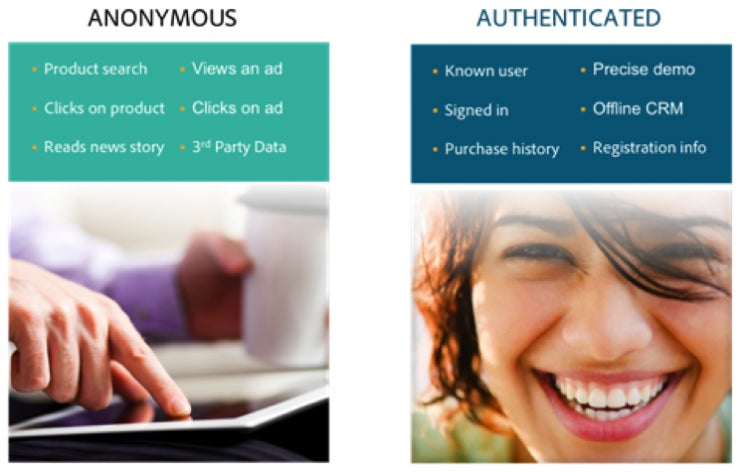As consumers, we’re inundated with marketing messages. We can learn about new products and services in any number of ways – via social media, television, display ads and more. The time between when we initially learn about a product and when we actually do purchase it is filled with touchpoints with various brands that may influence our final purchase decision. Tracking the path to conversion has become increasingly tricky as the number of possible touch points increases.
Increasingly, brands are challenged to find ways to reach more users and understanding their activities across multiple devices. Customers use laptops, tablets and mobile phones on a daily basis. Reaching them effectively on various devices is a critical requirement for today’s digital marketer.
The Importance of Cross Device Reporting
Facebook® has specific cross device reporting that allows you to track people’s movements across devices leading up to a sale. This can help you to understand where a customer is most likely to attempt to learn more about your brand, where they’re most likely to message you for more information, where they’re mostly likely to click through to your website and how they’re most likely to convert to a sale. Tracking each of these single statistics is a benefit in itself. You can also build on this information and use it to create broader campaign based on the sales funnel your average customer moves through before making a purchase.
For instance, Thomson, a popular UK travel brand, recently focused on cross device advertising with huge results. They found that click through rate was 227% stronger on mobile devices than on desktop. From there, they found that retargeting those users who had been shown a mobile ad previously in a desktop environment instead led to a 69% lower cost per booking and a 20% higher booking value.
Thomson’s cross-device targeting strategy leads to performance uplift
Thomson observed the strong impact that mobile had in their campaign. “Mobile placement has proved to be extremely valuable as we were able to reach and target new customers outside of our existing online channels. Mobile advertising on Facebook is now a fundamental part of our overall online strategy,” said Claudia Gomez, Paid Search and Biddable Social Specialist. While this advertising option is not new, brands are just starting to understand the benefits of incorporating mobile into a more robust ads strategy.
This strategy shows both the importance of tracking activity across devices to best understand how to drive conversions as well as the benefits of properly retargeting your audience. In most transactions, exposure to a single ad is not enough to convince a customer to convert. So, retargeting to customers is key to increasing your conversion rate or decreasing your overall cost per acquisition.
Impact of Website Custom Audiences
A key piece of getting the most out of cross device reporting is utilizing Website Custom Audiences (WCA). To implement this strategy, you create a pixel through your Facebook ads account. From there, place the pixel on various pages through your website funnel. This allows Facebook to effectively optimize across devices based on the authenticated social profile data the user has, which no other publisher can offer at this scale.
In fact, most publishers offer anonymous audience profiles. These are key to robust online strategies but not as intricately detailed as an authenticated Facebook, cross device report. It goes without saying that the more information you have on a particular user the more able you are to deliver ads that are relevant and actionable to them. Below are some examples of anonymous vs. authenticated data.
In the case study above, Thomson successfully used Website Custom Audiences through Facebook to better target users who had visited their site at some point. By understanding exactly who they were, how they had interacted with the brand and what they were interested in, Thomson was able to place ads that would successfully move them through the funnel.
Utilizing Lookalike Audiences
In much the same vein, Facebook retargeting can be extended to include lookalike audiences. Facebook lookalike audiences target users that are similar to an existing custom audience that you have created. Targeting these users will help to identify and advertise to users that “look”, or behave, like your typical customer. Lookalike audiences help you to identify which potential new customers are the most likely to convert and advertise to them directly.
In fact, Thomson utilized lookalike audiences to reach new audiences with favorable results. After building custom audiences based on which users had visited their website, they then created lookalike audiences. This helped them to reach consumers who, similar to their existing customers, were looking to get away from it all.
Understanding your customers’ behavior across devices can help you serve them the most targeted media on the right device. From there, you can extrapolate that out to reach customers with similar interests and behavior to your existing customer base. At the end of the day, this will allow you to spend your ad budget in the most targeted, efficient way possible.
Download the Thomson travel customer success story on Adobe.com to read more.
Facebook® is a registered trademark of Facebook, Inc.


